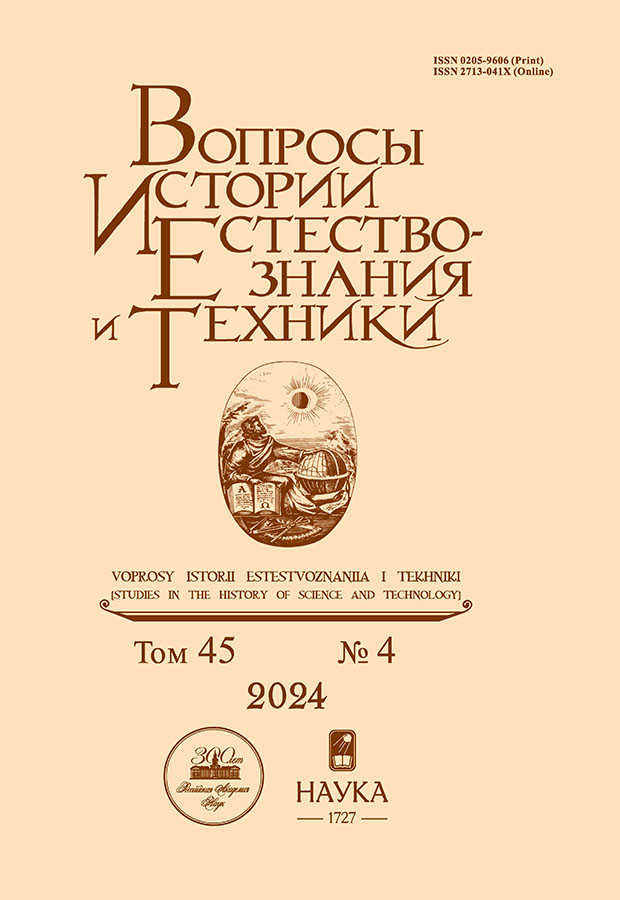The formation of national science in the Democratic Peopleʼs Republic of Korea: the work of the chemist Ri Sŭnggi and the invention of vinalon fiber
- 作者: Artemyev E.M.1
-
隶属关系:
- S. I. Vavilov Institute for the History of Science and Technology, Russian Academy of Sciences
- 期: 卷 45, 编号 4 (2024)
- 页面: 827-834
- 栏目: Brief Communications
- URL: https://rjmseer.com/0205-9606/article/view/671161
- DOI: https://doi.org/10.31857/S0205960624040095
- EDN: https://elibrary.ru/WLSFVA
- ID: 671161
如何引用文章
详细
The article examines the activities of Ri Sŭnggi (1905–1996), a North Korean chemist, full member of the DPRK Academy of Sciences (1952) and foreign member of the USSR Academy of Sciences (1966). Based on archival materials, publications in the North Korean press, and the works of the Russian and foreign historians, the author undertakes to analyze the milestones in Ri Sŭnggi’s scientific biography, taking into account the socio-political contexts of the formation of North Korean statehood, Ri Sŭnggi’s invention of the synthetic fiber vinalon, and also to highlight the reception of his activities in the DPRK and the USSR. It is concluded that Ri Sŭnggi’s discovery had an important role in establishing scientific and technological ties between the USSR and the DPRK and in the transfer of particular technologies from North Korea to the Soviet Union. The results of Ri Sŭnggi’s scientific activities indicate that the Soviet-North Korean scientific and technological contacts were not exclusively one-sided, and that Soviet scientists and specialists had also adopted the successful experience of their colleagues from the DPRK.
作者简介
Egor Artemyev
S. I. Vavilov Institute for the History of Science and Technology, Russian Academy of Sciences
编辑信件的主要联系方式.
Email: artemyev93@gmail.com
St. Petersburg Branch
俄罗斯联邦, Universitetskaia nab., 5, lit. B, St. Petersburg, 199034参考
- Botsin, M. G. (1965) Bratskoe sotrudnichestvo [Fraternal Cooperation], in: Ivanova, V. I., Lebedev, N. G., Hkan, M. Iu., and Shabshina, F. I. (eds.) Vo imia druzhby s narodom Korei. Vospominaniia i stat’i [In the Name of Friendship with the People of Korea. Recollections and Articles]. Moskva: Nauka.
- Cho, E. (2021) When the Political Spotlight is On: Social Evaluations of Ri Sŭnggi and Ryǒ Kyǒnggu, Two Chemical Engineers in North Korea, International Journal of Korean History, vol. 26, no. 1, pp. 255–285.
- Jung, K., Kim, Y., and Lim, S. (2017) Puk’anesŏ Soryŏnhyŏng Taehang Moderŭi Ishikkwa Hŭisŏk [Transplantation and Dilution of the Soviet Type University Model in North Korea], Ashia Ribyu, vol. 7, no. 1, pp. 109–150.
- Kang, H. (2003) Puk’an Kwahagwŏn’gwa Hyŏnjiyŏn’gusaŏp: Puk’anshik Kwahakkisurŭi Hyŏngsŏng [The On-Site Research Program and the Formation of Science and Technology in North Korea], Hyŏndae Bukʼan Yŏnʼgu, vol. 6, no. 1, pp. 199–246.
- Kim, K. (1998) ‘Ri Sŭnggiŭi Kwahak’kwa Puk’ansahoe [Ri Sŭnggi’s Science and North Korean Society], Han’guk Kwahak Sahoeji, vol. 20, no. 1, pp. 3–25.
- Palmyŏngwiin! Palmyŏngp’um! – Ri Sŭnggi [Inventors! Inventions! – Ri Sŭnggi] (2008), Palmyŏngt’ŭk’ŏ, vol. 33, no. 5, pp. 114–118.
- Sakurada, I. (1951) The Sakurada Laboratory, in: The Commemoration Volume for the Silver Jubilee. Kyoto: The Institute for Chemical Research, Kyoto University, pp. 84–91.
补充文件









